Environmental Law & Regulation
September 8, 2015
Overview
*A Little Context
*EPA & Federal Acts
*Clean Water Act
A Series of Both Unfortunate & Fortunate Events
http://www2.epa.gov/aboutepa/epa-history
When Water Burns: Cuyahoga River, Cleveland
- Long history of pollution: 13 fires since 1868
- Infamous fire June 22, 1969
- Times Magazine calls it "river that oozes rather than flows" and in which a person "does not drown but decays"
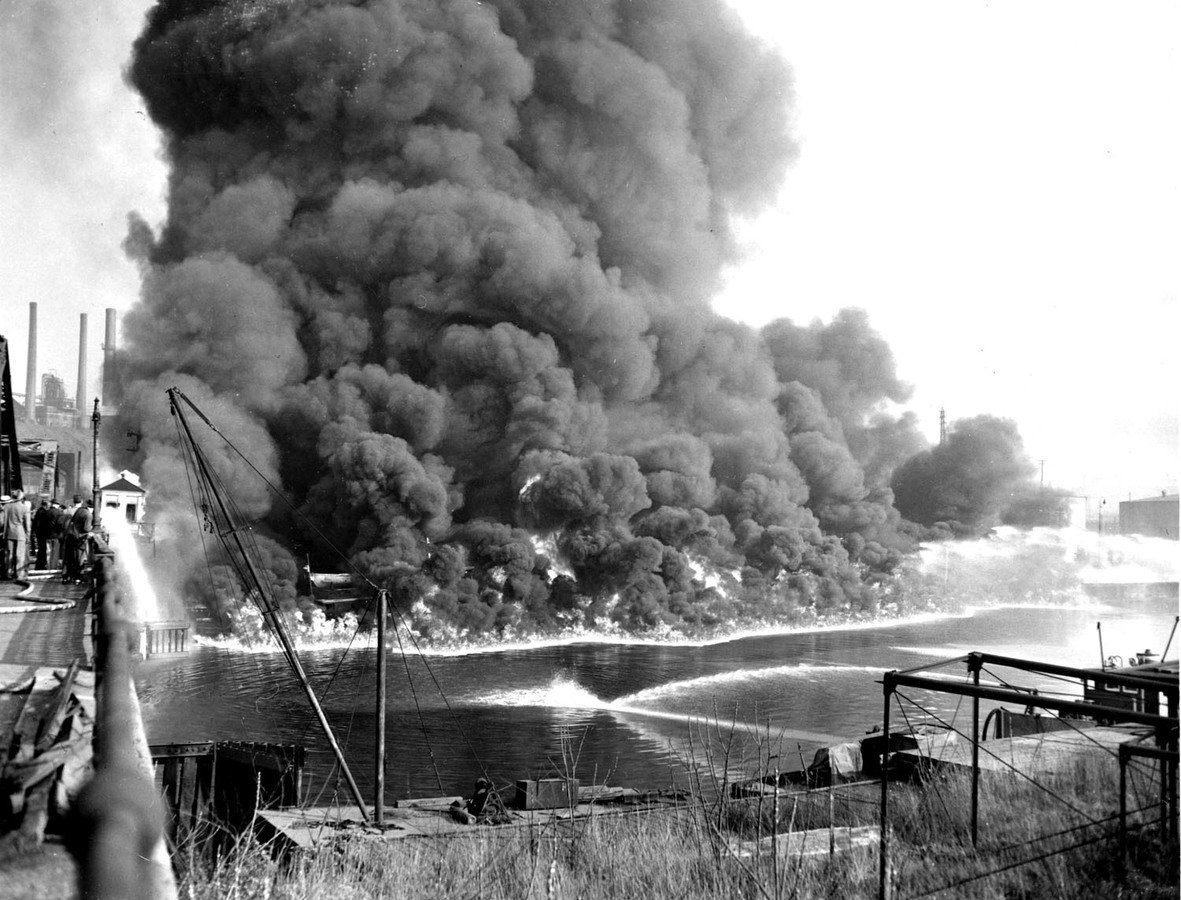
1st Earth Day: April 22, 1970


20 Million Attend Across US

Environmental Protection Agency Established 1970
Primary responsibilities:
- The regulation of air quality, water quality, and chemicals in commerce
- The development of regulatory criteria for the management and disposal of solid and hazardous wastes
- The cleanup of environmental contamination.
- EPA sets uniform standards, but implementation and enforcement delegated to the states.
- Finally, provides grants to states and local governments for pollution control programs and compliance
Federal Acts
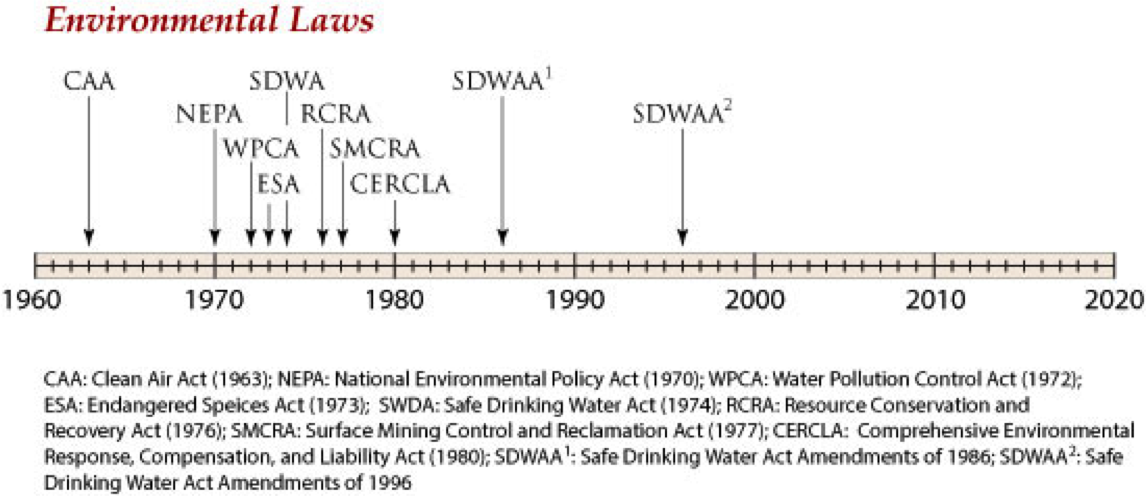
These federal statutes provide the legal authority for EPA’s programs and activities.
Common Law
Body of legal precedents that evolved from centuries of procedures. Often called case law. Uncodified.
Example: Right to Quiet Enjoyment of Land invaded by a Nuisance. Two types. Public nuisance vs. Private nuisance.
Civil Law
Law developed through legislative statute or regulations issued by an executive branch. Codified.
Example: Clean Air Act, Clean Water Act. Federal laws that regulate negative externalities and assist states in cleanup.
A Heated Public Nuisance
Clean Water Act 1972
- Purpose is to restore and maintain nation's water by:
- Preventing pollution, both public and private
- Providing assistance to publicly-owned wastewater treatment facilities
- Maintaining integrity of wetlands
Clean Water Act Cont.
- Cooperative Federalism: Rules & regs created by EPA, implemented by States
- States identify and monitor sources of pollution
- In Florida: administered by FDEP; issues permits and assess water bodies every 2 years
- Made illegal to discharge pollutants into covered water without proper permit
Clean Water Act Cont.
- States set variable water quality standards (WQS) according to category of use
- WQS were "Technology Forcing"
- Given until 1977 to implement "best practicable control technology"
- Given until 1989 to implement "best available technology," essentially raising the bar incrementally
Clean Water Act Cont.
- Water quality standards established for certain pollutants, such as nutrients, temperature, pH, bacterial contaminants
- Early WQS focused on organic compounds that depleted oxygen in water bodies and POINT SOURCES

Non-point Sources
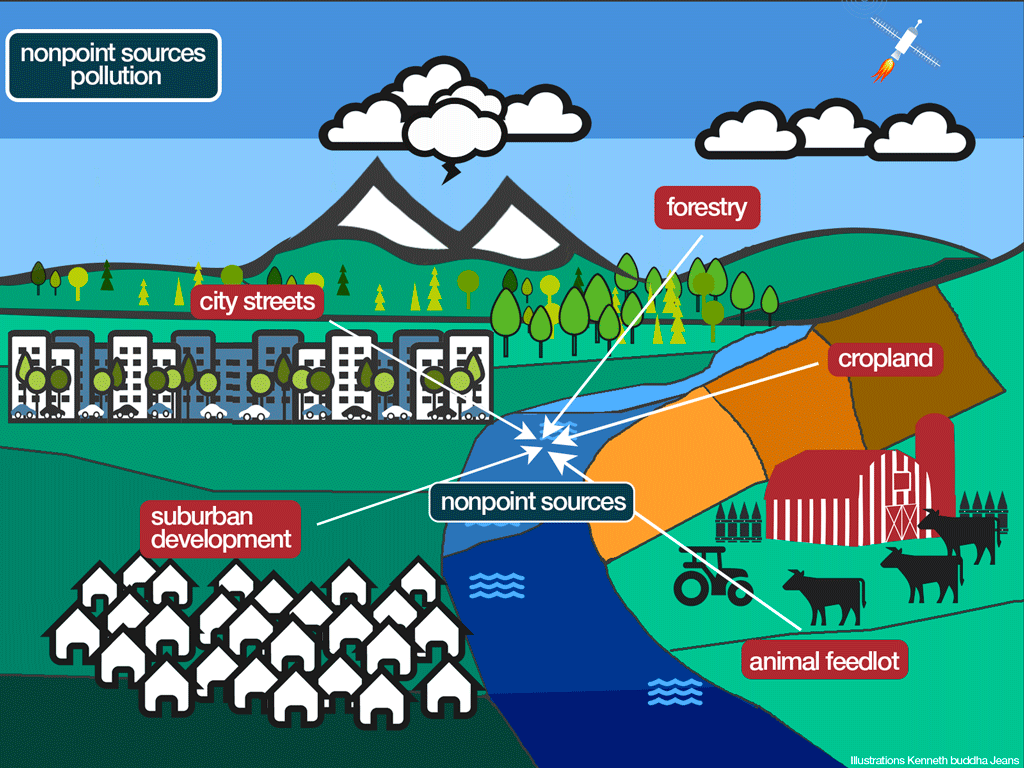
Non-point Sources by Ecosystem
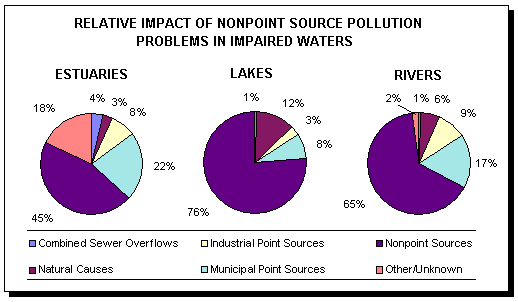
Source: USDA, 1991
Urban Runoff as Non-Point Source
- Recognized in 1987 Water Quality Act update to CWA
- Must capture and treat the "first flush effect"
- Stormwater management became permitted via National Pollutant Discharge Elimination System
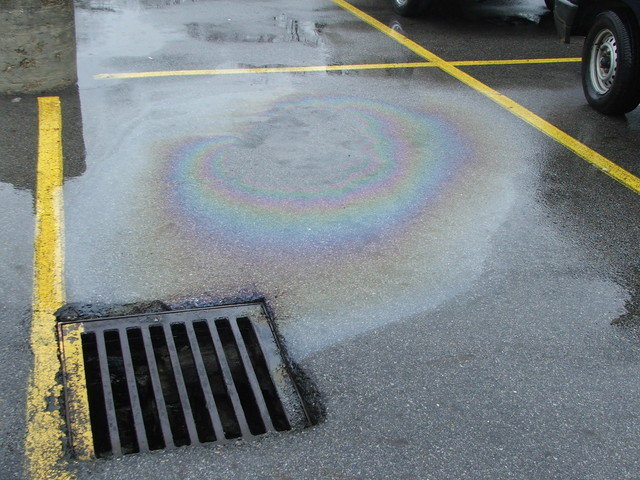
Stormwater Discharge Permitting
- NPDES permits required for local government
- Requires a stormwater management plan that covers at minimum:
- Outreach & Education
- Construction Projects
- Post-Construction Operations
- Illicit Discharges
- Pollution Prevention
- The problem? Piecemeal approach not tied to watershed boundaries and flow
A New Approach: Collaborative Planning at Work
- Watershed implementation plan that reflect watershed boundaries. Regional approach for a regional problem.
- Establishes Total Maximum Daily Loads and allocates contribution across watershed
- TMDL = "Calculation of maximum amount of pollutant a waterbody can receive and still meet WQSs"
- Example: Chesapeake Bay TMDL http://www.epa.gov/chesapeakebaytmdl/
Was CWA Effective?
- Doubled the number of water bodies nationwide safe for fishing and swimming
- Provided funding stream for sewage and waste water infrastructure at local level
- Significant non-point exempted, especially before 1987 update (agriculture lobby consistent throughout)
But significant amount of water still classified as impaired:
http://iaspub.epa.gov/waters10/attains_nation_cy.control?p_report_type=T#imp_water_by_state
Environmental Law & Regulation Part II
September 10, 2015
Overview
*Endangered Species
*NEPA Process
*Assignment 1
But first, a second thought on technology forcing policy
- Corporate Average Fuel Economy
- https://en.wikipedia.org/wiki/Corporate_Average_Fuel_Economy
- Complicated consequences: Fuel tax and Highway Trust Fund
- https://en.wikipedia.org/wiki/Highway_Trust_Fund
Endangered Species Act, 1973
- Primary goal: Prevent the extinction of imperiled plant and animal life
- Secondary goal: Recover and maintain populations by removing or lessening threats to their survival
- Authorizes the determination and listing of endangered and threatened species and their habitat
*Regulates directly the impact of federal agency actions
Endangered Species Act Cont.
- Administered by US Fish and Wildlife + NOAA
- Petition and Listing (meet 1 of 5 criteria):
1. There is the present or threatened destruction, modification, or curtailment of its habitat or range.
2. An over utilization for commercial, recreational, scientific, or educational purposes.
3. The species is declining due to disease or predation.
4. There is an inadequacy of existing regulatory mechanisms.
5. There are other natural or manmade factors affecting its continued existence.
Endangered Species Act Cont.
- Listing process
https://en.wikipedia.org/wiki/Endangered_Species_Act#Listing_process
- Listing status categories
https://en.wikipedia.org/wiki/Endangered_Species_Act#Listing_status
- Listed species reviewed every 5 years
- Federal agencies cannot take actions that jeopardize species
- Cannot take or harm in federal lands except with permit
- Taking = harass, harm, pursue, hunt, trap, shoot, wound, kill, capture, or collect!
Endangered Species Act Amendment 1984
- Habitation Conservation Planning
- Purpose: plan for mitigating impact on listed species, but allow for 'reasonable' development and economic activity
- Process for issuing incidental take permit (taking as part of land development vs. 'intentional'
Habitat Conservation Planning
- More proactive approach that integrates reality of green field development on non-federal property
- HPCs identify:
- Impacts on listed species
- Measures to mitigate
- Alternatives considered and action justified
- Protect land owner from future liability of violating the ESA
Habitat Conservation Planning
- "No surprise" policy:
"If, in the course of development, a landowner invests money and land to protect species covered in an HCP, the government will not later require that the landowner pay more or provide additional land even if the needs of species change over time."
- In Florida, ESA/HPC process is carried about by the Florida Fish and Wildlife Commission under NEPA process guidelines
Complexity of Habitat Impact
- Roadway noise pollution
http://www.pnas.org/content/early/2015/08/27/1504710112.abstract
- Fragmentation via power lines
http://www.theguardian.com/environment/2014/mar/12/animals-powerlines-sky-wildlife
Has ESA Been Effective?
- 2,220 currently listed (foreign + domestic)
http://ecos.fws.gov/tess_public/pub/Boxscore.do
- 59 delisted, 29 due to recovery
http://www.theguardian.com/environment/2014/mar/12/animals-powerlines-sky-wildlife
Success rate = 1% | Time for reform?
The NEPA Process, 1970
- Requires evaluation, documentation and disclosure of potential environmental effects of proposed federal actions
- Broad reach because it includes projects and programs entirely or partly funded, assisted, conducted, regulated, or approved by federal agencies
- Functions as widespread "umbrella statute" that defines process for any federally involved environmental consideration
NEPA Levels of Analysis
- Environmental Impact Statement (EIS): Detailed analysis document evaluating complex issues and identifying significant environmental effects
- Environmental Assessment (EA): “a concise public document” that provides sufficient analysis to determine if an EIS is required
- Categorical exclusion (CE): categories of activities determined by agencies that do not have individually or cumulatively significant environmental effects
The NEPA Process
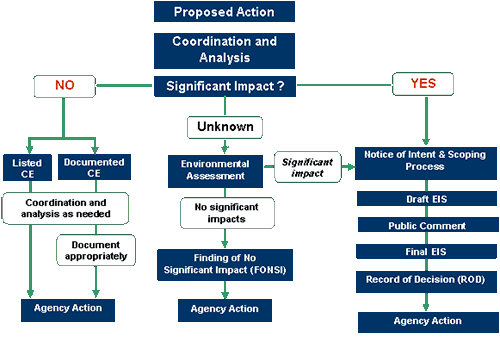
Environmental Impact Statements
- Multi-year process and resource intensive
- Decision making tool that ensures thorough consideration of alternative actions and public comment
- Threat of litigation from interest groups can help keep the process honest, but also has side effects

NEPA Litigation
- Relief can be sought by plaintiff under Administrative Procedure Act
- Federal agencies generally granted deference by court on technical issues, but process and rational use of technical info is assessed
- Connection between information and agency action is based on the standard of whether decision being challenged was arbitrary and capricious
- Can also bring suit on basis of failure to perform non-discretionary duties (deadlines to write/review rules)
Categorical Exclusions
Notable applications of CE:
- BP Off-Shore Drilling in the Gulf
http://www.washingtonpost.com/wpdyn/content/article/2010/05/04/AR2010050404118.html
- Halliburton and Shale Gas Fracking
http://www.nytimes.com/interactive/2011/03/03/us/20110303-natural-gas-timeline.html?_r=2&
Assignment 1
Case Brief
http://www.ucs.louisiana.edu/~ras2777/adminlaw/casebrief.html
Environmental Law & Regulation
By Lucas Lindsey
Environmental Law & Regulation
- 1,009



